Eduardo Ferré is a man on a mission now stretching into its fourth decade. What began over thirty years ago as a single man spending 50 hours a week shivering in a swimming pool in Notting Hill, has now morphed into a multi-million-pound business that operates in 21 locations across Britain and which continues to grow exponentially.
Swimming Nature prides itself on doing things differently. Instead of large group classes, the company has always focused on private tuition, either 1:1 or 1:2, but it is its unique focus on buoyancy and water confidence as firm foundations, followed by the slow integration of precise stroke technique, that sets it apart.
This is a methodology that Eduardo Ferré lives and breathes – one he formulated himself during the early 1990s through countless hours of trial and error.
And yet, he’s far from done. His vision of bringing successful swimming lessons to the broader population, teaching children and adults to swim effortlessly – even beautifully – remains as ferocious as ever.
The Boy from Brazil
Born in Brazil’s most populous city, São Paulo, Eduardo’s path to becoming a seasoned swimmer capable of revolutionising how we teach swimming was a rocky one – beginning with one of those traumatic swimming stories that scar so many so severely.
“I had a bad start. When I was four or five years old, I remember going to a public pool, and the teacher did that old-school trick of hurling me in at the deep end. My brother dove in to save me and took me to the side, ” says Eduardo.
Shaking and crying, Eduardo returned home and, through floods of tears, announced to his mother that he never wanted to swim again. A youthful adamant insistence, no doubt, but it was five years before Eduardo entered a swimming pool again.
“My obsession with swimming – particularly at the grassroots level, understanding fear, and the importance of getting adapted to the water first has a lot to do with that event,” says Eduardo.
When he did venture into the water again, it was in a private swimming pool in São Paulo, and the difference couldn’t have been more apparent.
“I loved it. Luckily, I was born with the right body shape, and within 2 or 3 years, I was entering competitions,” says Eduardo. A burning passion for all things swimming had begun, and by age 14, he was already teaching others how to swim.
Like most, finishing secondary school brought Eduardo to a crossroads, and like many, which direction to choose was far from obvious. At the time, his father ran a die-casting business in the city and hoped Eduardo would eventually take over the family company.
“I tried it for a week or two but couldn’t cope – it wasn’t for me,” says Eduardo. Not destined for the metal industry and inspired by his love of swimming and teaching, he studied physical education at university and graduated with a bachelor’s degree in 1985. Armed with higher education but with a deep desire to see more of the world, Eduardo left Brazil with a friend and travelled across the Atlantic to a country that couldn’t be more different from his homeland.
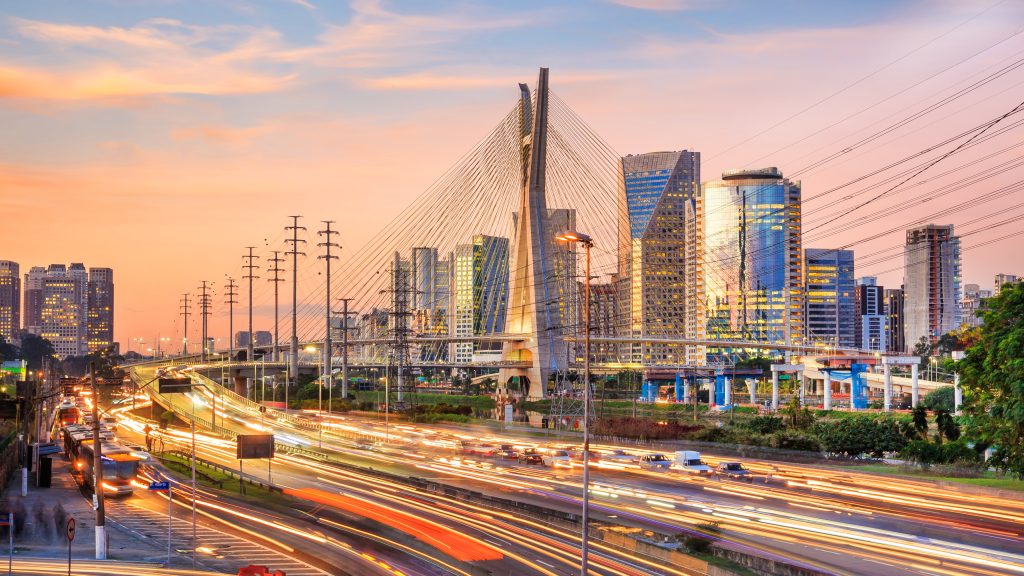
Seeing the World
London in the mid-1980s was a bewildering yet exciting place for the boys from São Paulo. With a pitiful level of English, work was hard to come by.
“My English was so bad I used to take pieces of paper into businesses that said, ‘I’m looking for a job,” says Eduardo. Countless rejections eventually led him to the Henry J Beans, a bar on London’s Kings Road, where he got his first job in London as a busboy.
“I did everything: clear away dishes, clean dishes, stocking – you name it,” says Eduardo. His stay in England was never intended as permanent, and he soon moved back to São Paulo, and continued working as a swimming instructor, this time in the more exclusive Dentro d’Agua setting.
But like many at that age, Eduardo had itchy feet, and a year after arriving back in Brazil, he was on the move again, travelling to Portugal and eventually on to France, working in bars, construction, whatever would pay the bills. And yet, a love of London remained. In May 1989, he arrived back in Britain, the country he has called home ever since.

A Method Emerges
It all began at the Kensington Leisure Centre. After briefly working at Cafe Rouge, Eduardo secured his first swimming teaching role in the UK in the plush surrounds of the Royal Borough of Kensington and Chelsea, in London.
“That’s where it all started. People started asking me for private classes, and I became very busy in a really short time,” says Eduardo. Slowly, an idea began to take shape, eventually evolving into what we know as Swimming Nature today.
“That’s where I realised there was a business model here, but it was a slow assessment of how to do things,” says Eduardo. Piece by piece, he began formulating a methodology to teach children how to swim carefully and comprehensively from the start.
“In Brazil, you had swimming class three times a week, but in England, I only had 30 minutes a week with students. It was nothing, but I wanted to give my customers value for money. That’s when I realised the core part of the methodology was getting the child to float – 100 times more than actually swimming,” says Eduardo.
It may sound obvious now, but the prevailing way of teaching, still commonly used, was to bypass the water confidence and buoyancy stage and get straight into trying to swim. For some, this works fine, but for many, it never addresses underlying fears of the water.
“Starting from the neutral position was the baseline from where I could teach everything else – all the other strokes – by drip-feeding very small amounts of information depending on the physiological and psychological capabilities of the students. Once I saw that they could replicate those small movements, I would add something new. It allowed for continuation that I could pick up from at the start of each class,” says Eduardo.
“That’s when I realised it was a fantastic approach for those with disabilities, children, and those with fears. It really helped to calm the nerves.”
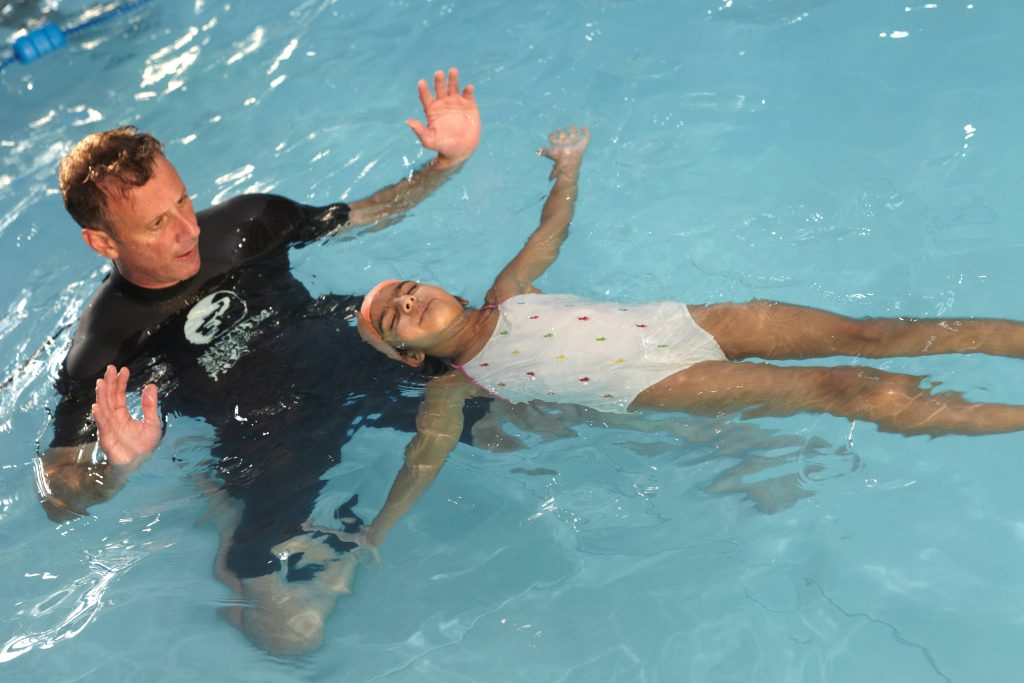
Swimming Nature is Born
In 1993, Swimming Nature was born.
“The word nature had a variety of connotations – caring for nature, the methodology that taught how to swim naturally, how to align with the water naturally, rather than fight – and of course, with me being Brazilian, it added an exotic twist – maybe made people think about the Amazon rainforest,” says Eduardo.
His brother, his pool saviour from all those years ago, helped design the logo and the initial animal designs that would come to define the company, and for the first time in his life, Eduardo began his own hiring process.
“To begin with, I employed three teachers without any students, and in one month, they were fully booked,” says Eduardo. Things took off quickly, with the now well-established seven-stage process put into place.
“Children start at Level 1, the Frog, and finish at Level 7, Swordfish, but really, because of the natural progression, I see this as one big lesson plan,” says Eduardo.
In 1994, Time Out ran their annual ‘Business of the Year’ competition, and after not hearing anything, Eduardo thought he’d cheekily put in a call to the magazine.
“I called Time Out and said, Where is my prize? The guy laughed and asked who I was, but when I told him, he said, That’s strange, your winning letter is right in front of me,” says Eduardo.
Everything took off quickly from there, with Eduardo soon adding the operations and software side to Swimming Nature. Progress has been rapid, with 150 highly skilled instructors now running fully-booked courses that serve 5,000 students a week.
Business is booming, but as proud as Eduardo is about Swimming Nature’s commercial success, his ideas around swimming and how it can be spread wider remain intense and enthusiastic.
“Before he was in the die-casting business, my father was a conductor and taught my mum to play the accordion when they met. I can’t play an instrument, but I’ve brought the same idea about timing, rhythm, and beat to swimming,” says Eduardo.
“There are so many things that go into swimming that can be used in our everyday life. When you are in the water, you need to slow down and breathe – it’s vital. The same goes for when you’re out of the water, too.”
“Slowing down is usually the fastest way of doing something. It’s the best way of avoiding procrastination. It’s a form of meditation,” says Eduardo. Considering the spiralling mental health issues around the country, along with chronic stress and anxiety that have seen them become the biggest reason for sick days in the UK, slowing down and breathing is something many of us could use more of.
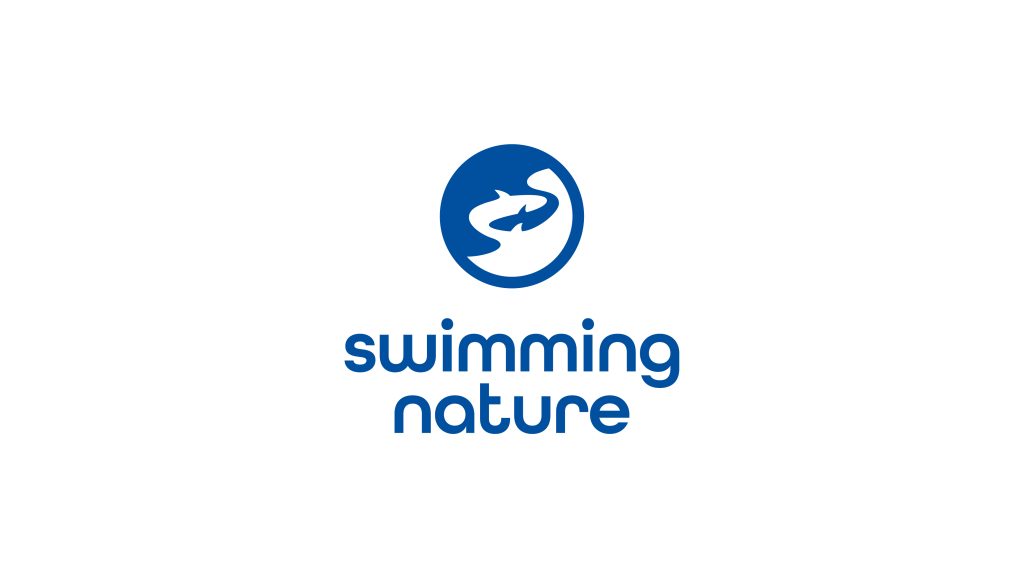
The Future Outlook
When Eduardo started Swimming Nature, he had grand plans to ensure that everybody in the country would be able to swim.
“That vision was a bit damaging for my health,” he laughs, “You need to take small steps, and maybe I was a little naive, but that’s how I’ve got to where I am now. However, I still have the drive to achieve that vision – somehow.”
The challenge of bringing swimming to the masses has never been more significant, with an estimated 1 in 3 children leaving primary school unable to swim, while figures for adults are roughly the same. The reasons for this are wide-ranging.
“Access to swimming pools, economic crisis, parents who are scared of the water themselves, ignorance, cultural issues – there are so many reasons,” says Eduardo.
“The way forward is to educate people as much as possible and convince the government to tighten the measures to ensure that the parameters set out in the curriculum are met”.
Eduardo believes that Swimming Nature is doing its part but doesn’t turn a blind eye to the limitations of private swimming tuition.
“I know that not everybody can afford our classes, and that’s something I sometimes argue about in my mind,” says Eduardo. While the immediate practicalities of private classes for all are beyond most means, the drop in swimming standards in the UK does beg the question of whether there are alternative ways of doing things.
“Wouldn’t we get more out of classes if we reduced the number and taught each student properly? I don’t know what would happen because we don’t have the research yet, but we need to look into this. Only a third, or half, of children actually learn how to swim. The others have been in the water but haven’t learnt anything,” says Eduardo.
Eduardo isn’t under any illusion regarding the size of the problem at hand. The swimming industry is in peril, but he remains as passionate as ever and determined to help in any way he, and Swimming Nature can. The problems the industry is facing are enormous, but with unique and innovative approaches – a different way of thinking and perhaps even doing business – they are by no means insurmountable.
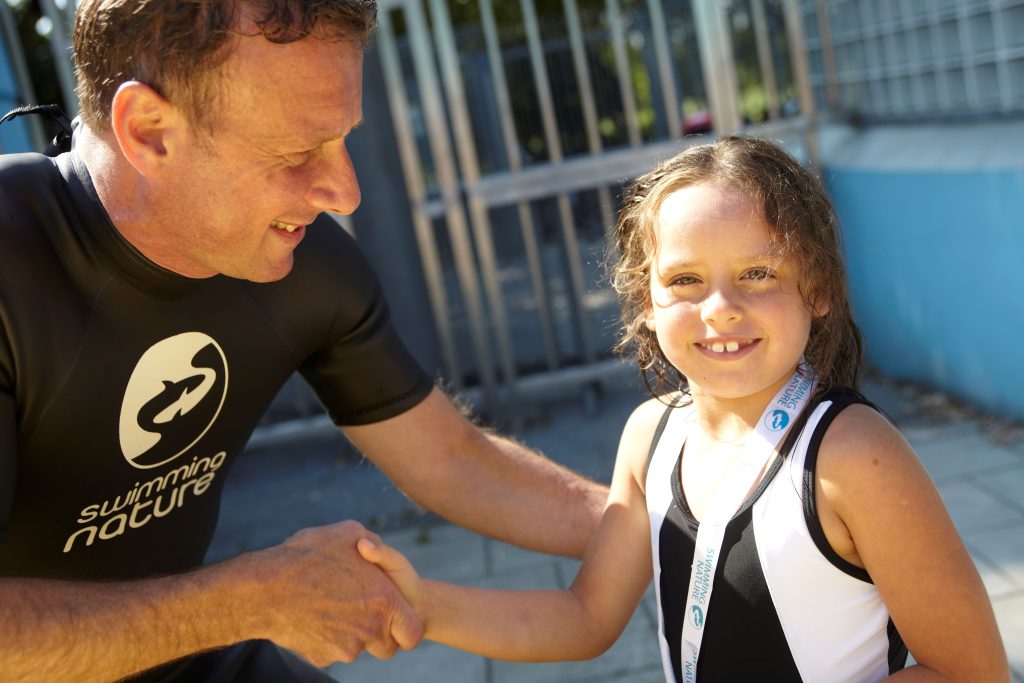

 LOG IN
LOG IN
 CONTACT US
CONTACT US

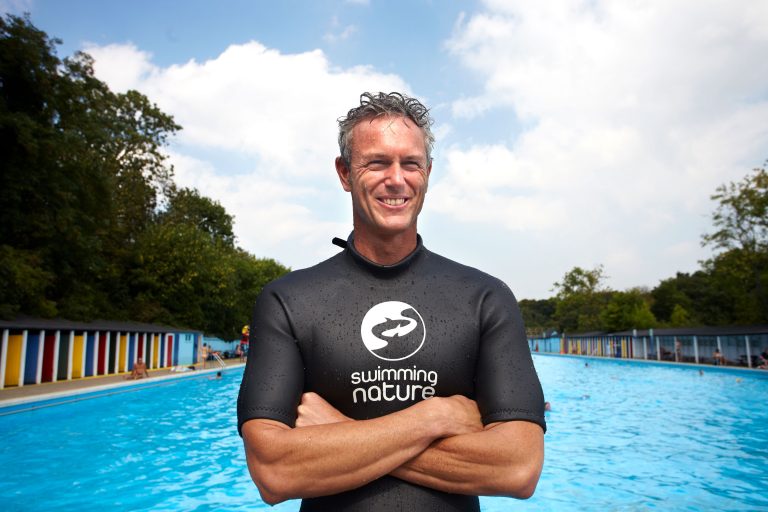
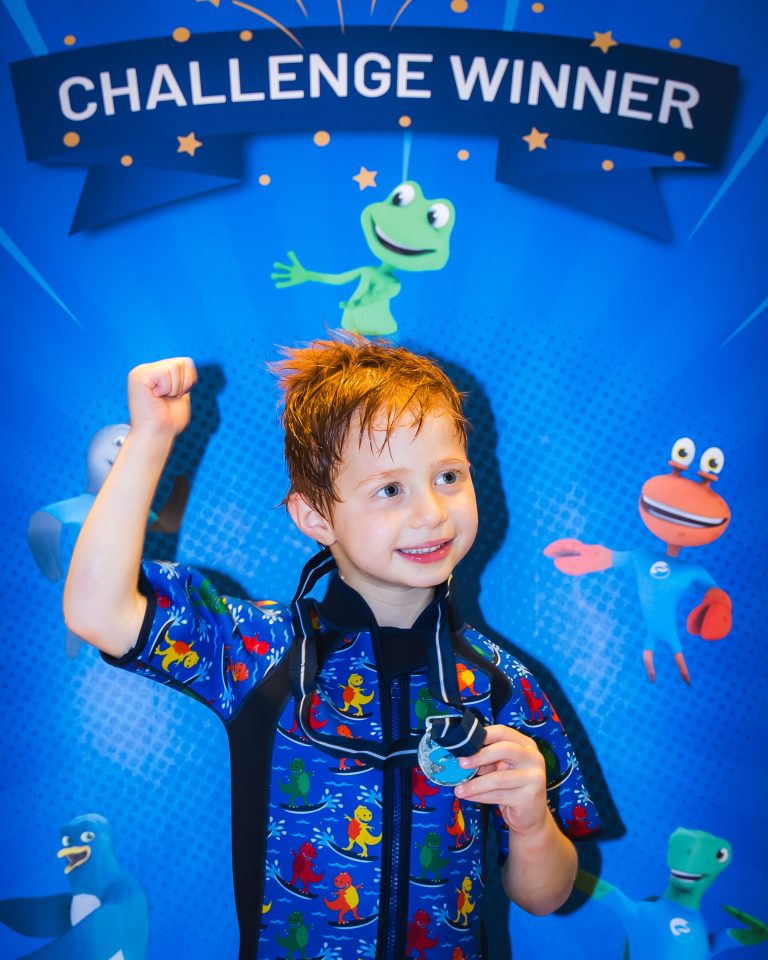
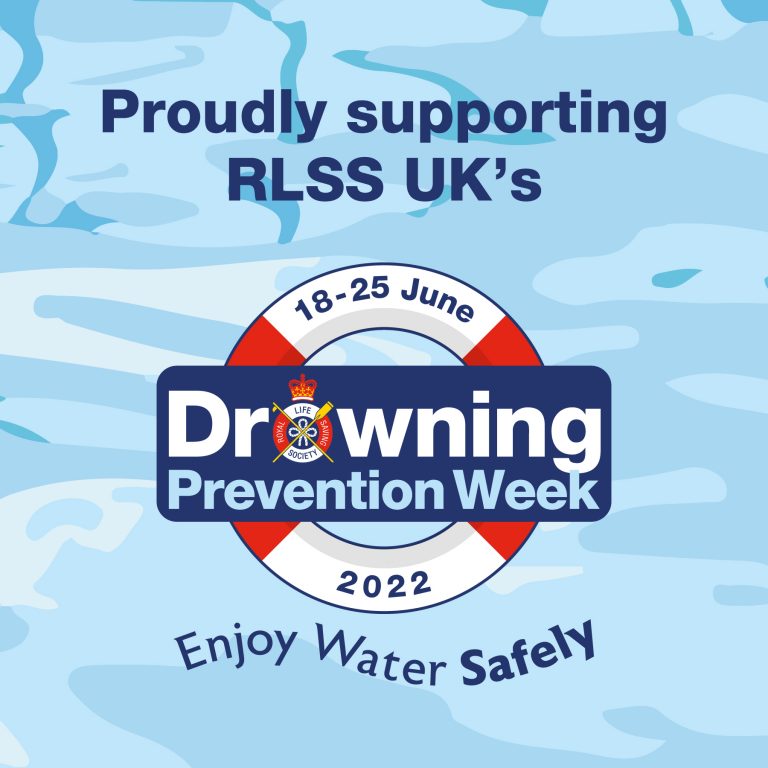





I worked as a swimming instructor for swimming nature in the Kensington Leisure Centre between 1998-2000, while coursing my University studies. I am for Barcelona and I had been playing waterpolo and teaching swimming for quite a few years before moving to London. I loved their philosophy about swimming. I am happy to see that Edoardo and the rest of swimming nature team have grown quite a lot since then. Good people deserve good things to happen to them.